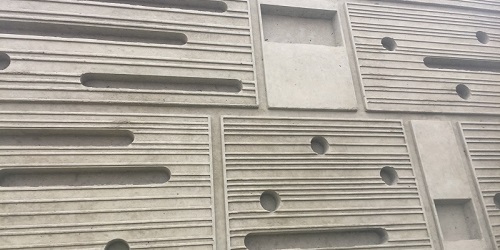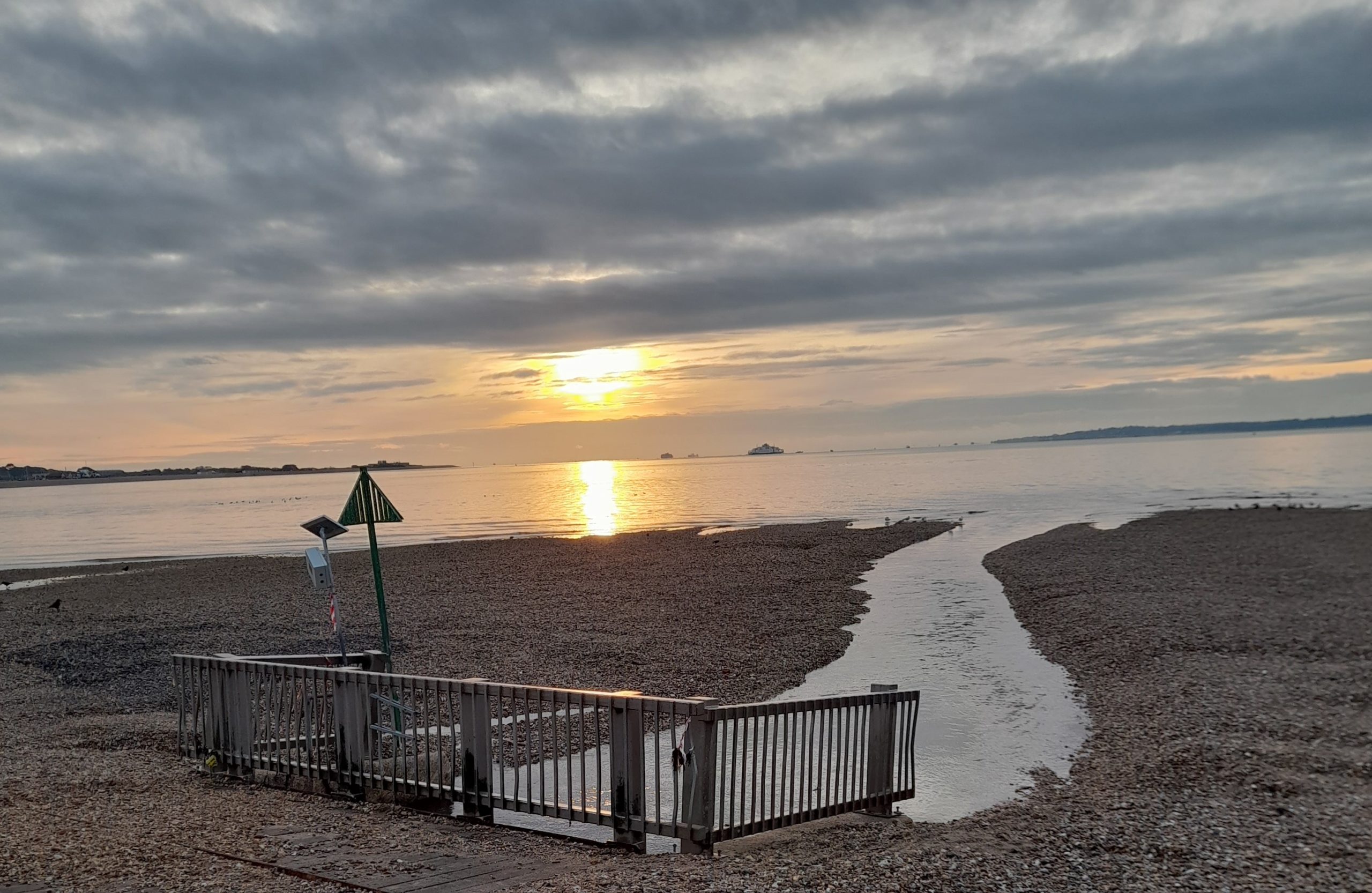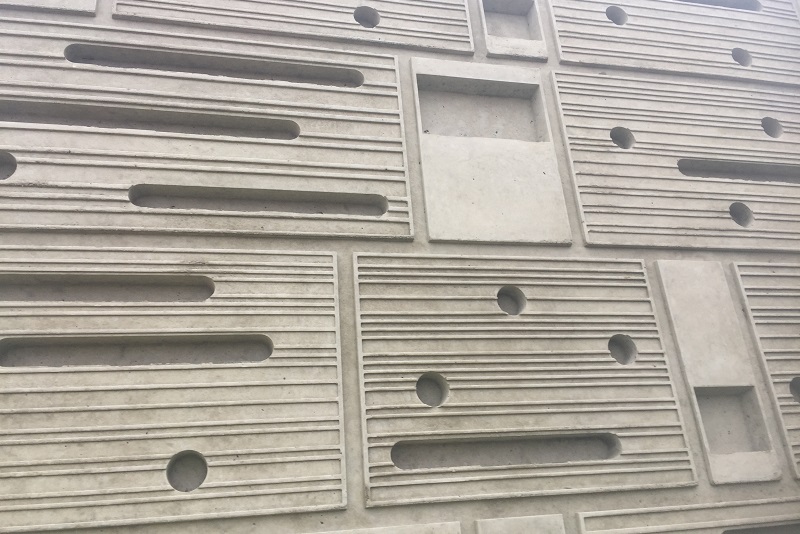
The North Portsea Island Coastal Defence Scheme could be a blueprint for other areas at risk of flooding, as it features the first textured seawall specifically designed for inter-tidal ecology in the UK.
That’s according to a feature first published by New Civil Engineer in December 2020.
The £58m scheme, which is being delivered by Coastal Partners (formerly Eastern Solent Coastal Partnership) on behalf of Portsmouth City Council, is being completed in five phases.
Mackley was selected from a shortlist of four experienced contractors to carry out the fourth phase of the scheme – which has been split into two sections. The first, near Kendall’s Wharf and following that, a section adjacent to the Eastern Road.
Work on the Kendall’s Wharf site involves raising the road level and building an earth embankment and steel sheet pile wall. This was undertaken between November 2019 and October 2020.
Work on the Eastern Road section will start in spring 2021 and is due to finish in September 2023. This will involve building a vertical reinforced concrete sea wall with steel sheet pile toe and areas of glass flood wall.
Here, most of the sea defence will be a textured sea wall to provide a habitat for marine plant and animal species found in Langstone Harbour. The design provides shelter and shade and retains moisture which will provide a suitable habitat for marine flora and fauna to flourish.
Lucy Sheffield, Coastal Partners coastal environmental project engineer, told New Civil Engineer: “We did a survey of what was on the foreshore and then we targeted each of those species with different holes, crevices and texturing in different areas. Things seaweeds can hold onto, or for limpets to graze “.
“It’s all in the inter-tidal zone so when the tide goes out it’ll be exposed, and you’ll be able to go and see it. It will take a number of years, but the idea is that the wall will be covered in seaweeds and when you lift them up, you’ll find all the different creatures under there.
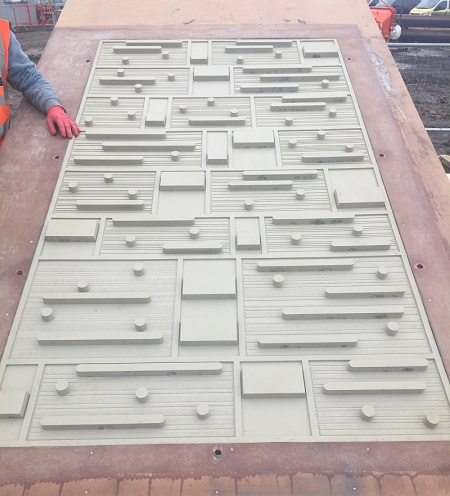 The concrete sea defence is textured using an ‘Ecoformliner’ mould, which imprints into the wall during construction. As such, the texturing is part of the actual sea defence – rather than a “bolt on” – and has a 100-year design life.
The concrete sea defence is textured using an ‘Ecoformliner’ mould, which imprints into the wall during construction. As such, the texturing is part of the actual sea defence – rather than a “bolt on” – and has a 100-year design life.
Coastal Partners have worked with experts including the University of Glasgow and University of Bournemouth to design the mould.
The project has completed a successful trial, which tested buildability and construction techniques, and the Ecoformliner will be used on the wall starting in March 2021. All of which wouldn’t have been possible without funding from the Regional Flood Defence Committee, the Environment Agency, and Natural England.
The trial highlighted the fact that the texturing is a delicate process.
“It’s quite a big formliner and very intricate, so it’s making sure we could release the formliner without it all chipping off – we wanted to make sure the texture remained intact,” Sheffield added.
Meanwhile Caroline Timlett, Coastal Partners project engineer and project manager, told New Civil Engineer: “The main thing was making sure the design was right and that we knew how to treat the formliner – there’s a specific type of wax pre-treatment you have to do to it to allow it to release from the concrete so it doesn’t damage the wall or formliner “.
“Each formliner can provide 100 pours if treated and stored appropriately under cover”.
“The challenge was completely understanding all the constraints we had to adhere to in order to make it work and then once on site, Mackley made it look easy.”
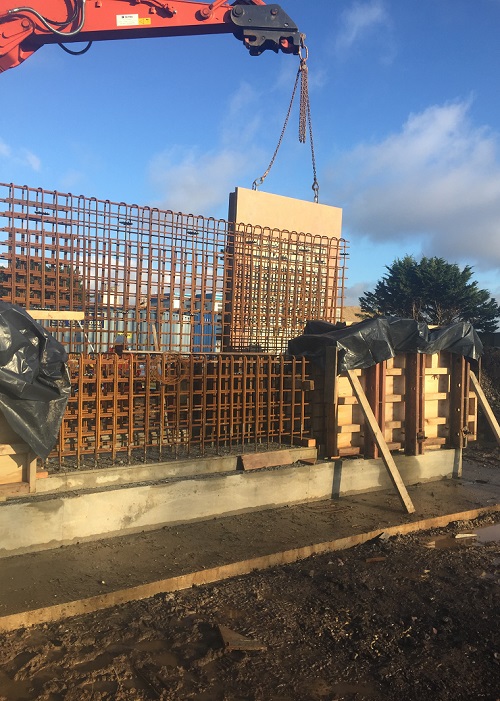
As well as environmental benefits, the marine plant growth on the sea wall is expected to have practical advantages. Following installation, the vegetation should absorb wave energy, reduce temperature fluctuations and reduce salt ingress and egress into the local ground water to create a more stable environment.
The team are also working with Natural England and local stakeholders to enhance the sea defences through construction of a bird island, and the creation of a salt marsh. Tidal pools will also be included in the stepped wall revetment.
The areas on the land side of the wall will also be improved with better footpaths, additional seating and viewing platforms. One hundred and twenty-five trees will be planted on this stretch, as well as a wildflower mix and bee posts along the frontage.
Construction has been limited to the period between April and September due to the presence of overwintering birds at the harbour. As such, the Eastern Road work, for example, will take place over three summers.
“The significant nature and sensitivities of the harbour is another challenge,” Timlett added.
“We have to be careful we don’t have a detrimental impact – we’ve installed a silt curtain to ensure any disturbed sediment is contained effectively. We also change piling techniques in the summer, so seal pups are not affected.
But it’s also an opportunity – it’s a lovely, sensitive area so we’ve had to make sure we’re doing all this right. We’re going further and trying to enhance the wall and improve the water body.”
The scheme could be a blueprint for other areas at risk of flooding. It will be the first textured seawall specifically designed for inter-tidal ecology in the UK, with hopes that it will set the standard for future seawall construction nationally and internationally.
For more information about Coastal Partners visit their website and follow them on social media by searching Coastal Partners.
12 February 2021
